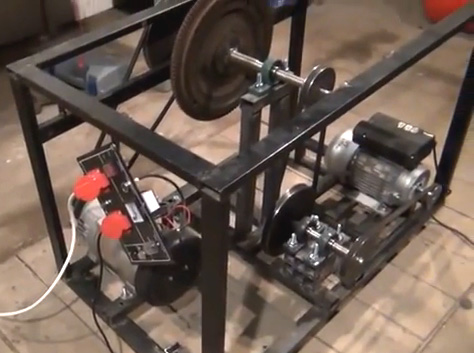Uses of the Stirling Engine: Past, Present, and Future
 |
| Stirling Engine Magnetic Version: Free Energy Potential |
Main Uses of Stirling Engines
Direct Sources of Kinetic Energy
Stirling engines have historically been employed to generate direct kinetic energy for mechanical systems. During the Industrial Revolution, they were used in a variety of applications, including pumping water and powering machinery. Today, they continue to find use in similar roles, such as powering mechanical systems in industrial settings. Their ability to operate quietly and efficiently makes them particularly useful in environments where noise reduction is crucial
Indirect Sources of Kinetic Energy
In addition to direct mechanical applications, Stirling engines are used to generate electrical energy by driving generators. This electrical energy can then be converted into various forms of kinetic energy, expanding the engine's utility. Combined heat and power (CHP) plants for businesses utilize Stirling engines to generate both electricity and heat, improving overall energy efficiency. This dual functionality makes Stirling engines an attractive option for decentralized power generation.
Scientific Research and Education
Stirling engines are also valuable tools in scientific research and education. They serve as practical examples for studying the principles of thermodynamics, heat transfer, and pressure dynamics. Educational models and toys based on Stirling engines help students and hobbyists understand these fundamental physical concepts through hands-on experimentation.
Current Situation: Advantages and Disadvantages
Efficiency and Smooth Operation
Stirling engines are renowned for their efficiency and smooth operation. Unlike modern gasoline engines, which have an efficiency of only 20 to 25%, Stirling engines can achieve efficiencies of up to 30%. This higher efficiency means that more of the fuel's energy is converted into useful work, with less wasted as heat. Additionally, Stirling engines operate with a wide range of rotation speeds, allowing for simpler transmissions with only 2 to 3 gears and minimal oil consumption. The absence of internal explosions also contributes to their longevity, with service lives extending into tens or hundreds of thousands of hours.
Versatility and Environmental Friendliness
The Stirling engine's ability to run on various fuels, from manure to uranium, and its resilience to environmental contaminants like dirt and salt, make it incredibly versatile. Moreover, Stirling engines are environmentally friendly, as they burn fuel completely, reducing the need for catalytic converters used in internal combustion engines to minimize emissions.
Challenges in Modern Application
Despite their advantages, Stirling engines face significant challenges that limit their widespread adoption. The primary issue is cost; Stirling engines are more expensive to produce than traditional internal combustion engines. This higher cost is due in part to the need for expensive materials and alloys to achieve optimal performance, as well as the use of gases like hydrogen or helium at high pressures in industrial models.
Another challenge is scalability. Creating small, efficient Stirling engines with low power output remains difficult, and the ratio of engine mass to power output is still not ideal. The complexity of achieving the ideal Carnot cycle efficiency further complicates the development and implementation of these engines in practical applications.
Historical and Contemporary Research
In the 1940s, Philips experimented with installing Stirling engines on public transport, demonstrating early recognition of their potential. In the 1960s and 70s, the US National Heart Institute funded research into developing an artificial heart powered by a miniature Stirling engine, though this project was ultimately cancelled. More recently, NASA developed a Stirling engine using plutonium-238, capable of operating for several years, although its power output has fluctuated.
Future Potential
The future of Stirling engines holds significant promise. Their high efficiency, environmental benefits, and versatility make them an attractive option for various applications. As technology advances, the cost and scalability issues may be addressed, allowing for broader adoption. Potential future uses include powering submarines, providing decentralized energy solutions, and contributing to space exploration efforts.
Generating electricity using ancient technology (more than 100 years old) has been suppressed by technology monopolies:
- Mechanical configurations and circuit diagrams are like a solution to the IQ puzzle of classical physics. It involves thinking beyond the dogma of science and the primitivism of Newtonian billiard ball physics.
- Electricity is generated from devices as small as rabbits, which then charge multiple batteries and feed into an inverter to produce AC current (60Hz; 220V/110V). Electricity is continuously generated throughout the day and week (24/7) and up to years. This device, with a diagram as small as a rabbit, serves as a solution to an IQ puzzle when considering classical mechanical physics and Overunity electronic circuits.
- If you understand the nature of the problem from that solution, then you can create a large generator for an entire business!
📗 Unique solution to generate Electricity on demand: 👉 Unlimited Power Generator
= Not only Stirling Generator free energy, but also a combination of many other unique solutions to generate free electricity for the home!
The Stirling engine's ability to efficiently convert heat into kinetic energy continues to offer valuable applications across different fields. While challenges remain in terms of cost and scalability, ongoing research and development could unlock even greater potential for this remarkable technology. The renewed interest in Stirling engines underscores their enduring value and the possibility of integrating them into the modern technological landscape.
Related: Stirling Engine Magnetic Version: Free Energy Potential




Post a Comment